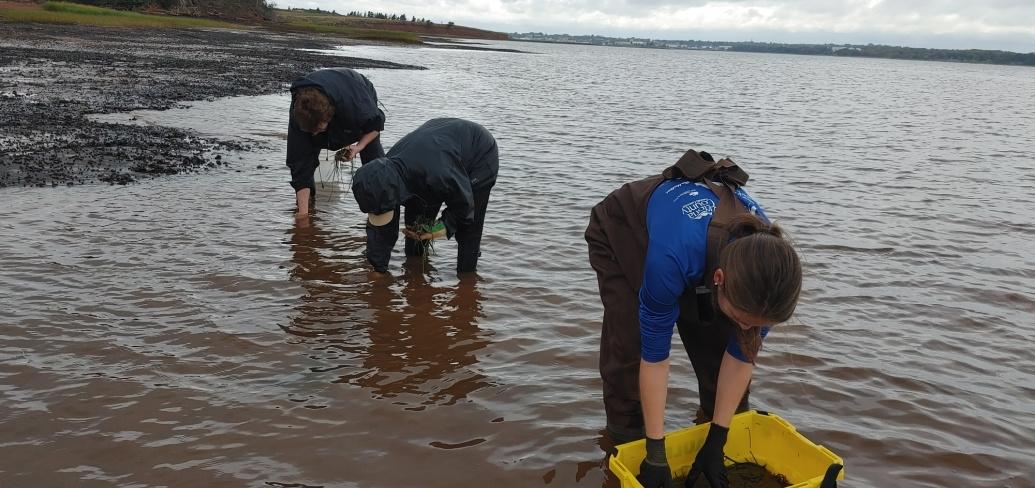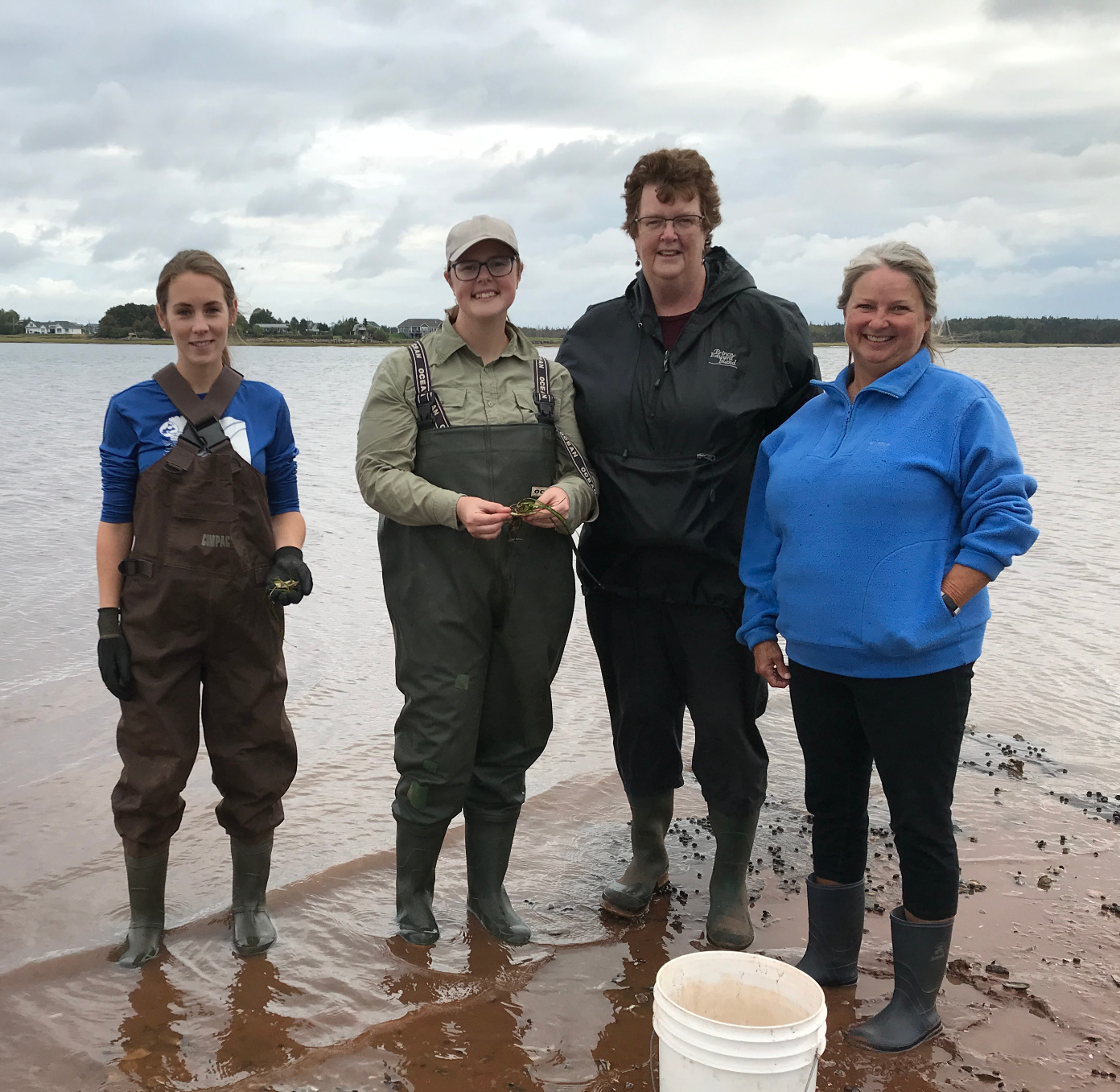Climate Challenge Fund: Supporting PEI’s environmental innovators

The impact of storm surges and coastal erosion is an issue PEI has always faced.
But the work of some innovative Islanders, coupled with financial support from government, has helped cushion that impact—literally.
“This is a soft approach,” says Kalyee Busniuk, watershed coordinator for the Stratford Area Watershed Improvement Group
Last summer, the group established a ‘living shoreline’ along the banks of a section of the Hillsborough River.
Living shorelines are built using natural materials, such as plants and sand, which help stabilize the coastline, lessening the damage of severe weather and rising tides that are often associated with climate change.
Its design reduces the force of a tide’s wave – before it hits the coastline, says Busniuk.
“When it does hit the shoreline, it’s soft again and able to bounce in the sand.”
Last year, Busniuk’s group received funding through the province’s Climate Challenge Fund to help address the effects of erosion in the Stratford area, where many homes are built along PEI’s vulnerable sandstone cliffs.
Busniuk and her team created the multi-tiered living shoreline along a 200-metre section of unprotected coastline off Hamm’s Lane in Bunbury.
The area had no riparian zone – an area of vegetation that surrounds wetlands, streams and rivers, says Busniuk.
So, she and her team stepped in to help.
“We added a significant number of trees – around 200 – and shrubs to the bank, where the grass would be,” says Busniuk. “Those roots will grow into the soil and help stabilize the bank.”
The group also placed logs along the slope of the bank and filled them with soil, creating planting beds deep enough to hold the shrubs in place.
This ‘soft’ approach is a return to nature’s design, says Busniuk. And it has fewer negative environmental impacts than “hard armouring” which involves installing large boulders or concrete slabs along the coastline – a technique some Islanders have tried using to protect their properties.
“That can actually increase coastal erosion. And it really changes the beach dynamic by moving sand around.”
A living shoreline is less intrusive and helps maintain the relationship between land and water.
It’s also significantly cheaper, says Busniuk – with some hard armouring projects costing up to $200,000, while a living shoreline can be done for as little as $2,000.
“A lot of people didn’t know it was an option.”

Busniuk says the funding her group received through government’s Climate Challenge Fund allowed them to test this more sustainable approach—and share their project’s journey with Islanders.
They communicated their progress through social media, posting updates and photos.
“We wanted to make sure that taxpayers understand where their money is going and really show them the benefits that this program brings.”
Busniuk encourages anyone with an idea to apply to the Climate Challenge Fund – especially non-profit organizations.
“Having these sources of funding for projects is incredibly important,” she says.
“We couldn’t do this work without these grants.”